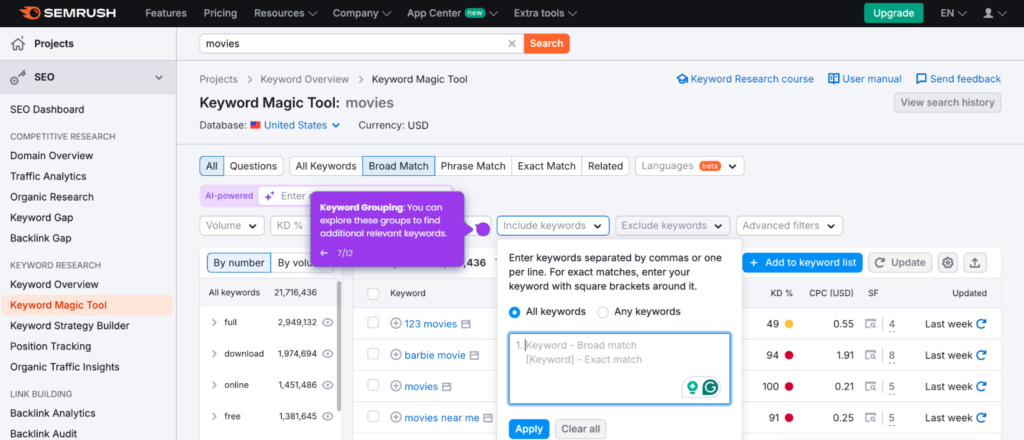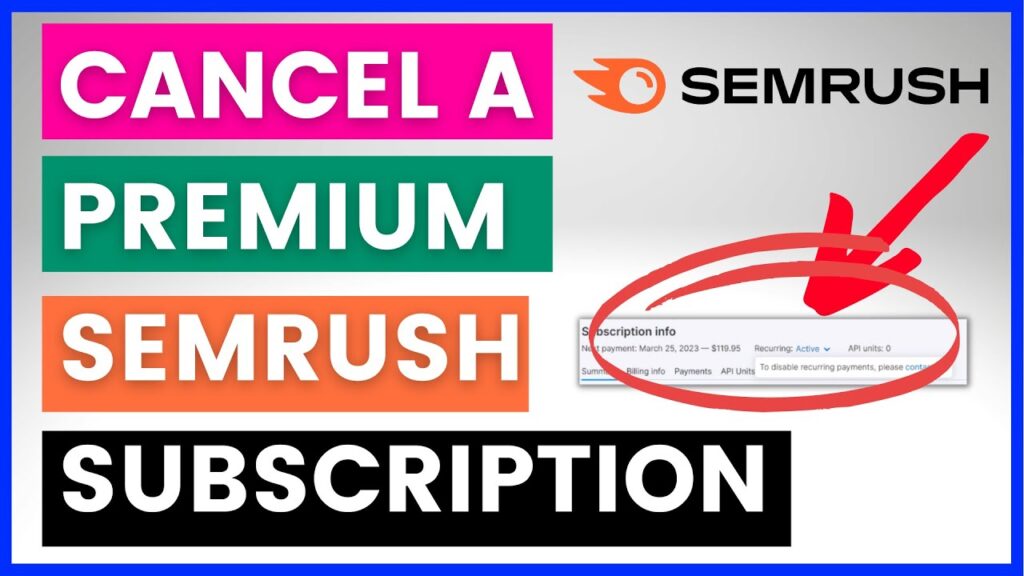Are you looking to find local keywords to improve your SEO? If so, Semrush is a powerful tool that can help. In this guide, we will explore how to search for local keywords using Semrush. We will cover everything from setting up your account to analyzing the results. Let’s get started!
What is Semrush?
Semrush is an online marketing tool. It helps you with SEO, PPC, and social media. You can find keywords, track rankings, and analyze your competitors. It is perfect for businesses of all sizes. Semrush makes it easy to improve your online presence.
Why Use Local Keywords?
Local keywords are important for local businesses. They help you attract customers in your area. When people search for services, they often include their location. For example, someone might search for “pizza near me.” By using local keywords, you can reach these customers easily.
Step 1: Create a Semrush Account
To start using Semrush, you need an account. Follow these steps:
- Go to the Semrush website.
- Click on “Sign Up.”
- Fill in your details.
- Choose a plan that fits your needs.
Once you have signed up, you can start using the tool.
Step 2: Access the Keyword Overview Tool
After logging in, you will see a dashboard. Look for the “Keyword Overview” tool. This tool helps you find keywords and their data.
Here’s how to access it:
- On the left sidebar, click on “Keyword Research.”
- Then click on “Keyword Overview.”
Step 3: Enter Your Keyword
In the Keyword Overview tool, you will see a search bar. Type in a general keyword related to your business. For example, if you own a bakery, you might type “bakery.”
Click on the search button after entering your keyword. Semrush will show you data about that keyword.
Step 4: Set Your Location
To search locally, you need to set your location. Here’s how:
- Look for the location dropdown menu in the tool.
- Select your desired location. This could be your city or region.
This step is crucial for finding local keywords.
Step 5: Analyze the Results
After you set your location, Semrush will display results. You will see the following:
- Search volume: How many people search for this keyword.
- Keyword difficulty: How hard it is to rank for this keyword.
- Cost-per-click (CPC): How much you would pay for ads.
Review these metrics carefully. They will help you choose the best keywords.
Step 6: Explore Related Keywords
Semrush also shows related keywords. Look for the “Related Keywords” section. This section provides more keyword ideas. You can find long-tail keywords too. Long-tail keywords are phrases that contain three or more words. They are often easier to rank for.
Step 7: Use the Keyword Magic Tool
Another great tool in Semrush is the Keyword Magic Tool. This tool helps you find even more keywords. Here’s how to use it:
- Click on “Keyword Magic Tool” in the left sidebar.
- Enter your main keyword again.
Then, select your location once more. The tool will generate a list of keywords.
Step 8: Filter Your Results
You can filter your results for better insights. Use the filters to narrow down your options. You can filter by:
- Search volume
- Keyword difficulty
- Word count
These filters help you find the most relevant keywords.

Credit: m.youtube.com
Step 9: Check Competitors’ Keywords
Understanding what keywords your competitors use is vital. Semrush offers a feature for this. Here’s what to do:
- Go to “Domain Overview” in the left sidebar.
- Enter your competitor’s website.
You will see keywords that your competitor ranks for. This information is useful for your keyword strategy.

Credit: www.semrush.com
Step 10: Save Your Keywords
As you find valuable keywords, save them for later. Semrush allows you to create a list. This way, you can easily access them. Simply click on the star icon next to a keyword to save it.
Step 11: Create Content Around Your Keywords
Once you have your keywords, it’s time to create content. Write blog posts, articles, or web pages. Make sure to include your keywords naturally. This will help you rank better in search engines.
Step 12: Monitor Your Rankings
After publishing your content, monitor your rankings. Semrush allows you to track your position. Go to the “Position Tracking” tool. Enter your keywords and location to see how well you are ranking.
Frequently Asked Questions
How Can I Find Local Keywords In Semrush?
Use the “Keyword Overview” tool and filter by location to discover local keywords relevant to your business.
What Features Help With Local Keyword Search?
Semrush offers tools like “Keyword Magic Tool” and “Position Tracking” to enhance local keyword research.
Can I Analyze Competitors’ Local Keywords?
Yes, use the “Domain Overview” feature to uncover competitors’ keywords and their local search strategies.
How Do I Filter Keywords By Location?
Select the desired location in the “Keyword Magic Tool” to view localized keyword suggestions.
Conclusion
Searching for local keywords in Semrush is simple and effective. By following these steps, you can find the right keywords for your business. Local keywords will help you attract more customers. Remember to create valuable content around these keywords. Monitor your progress to see great results!
Additional Tips
- Always stay updated with local trends.
- Use social media to engage with your audience.
- Consider seasonal keywords for special promotions.
With these tips and Semrush, you are on your way to improving your local SEO!



